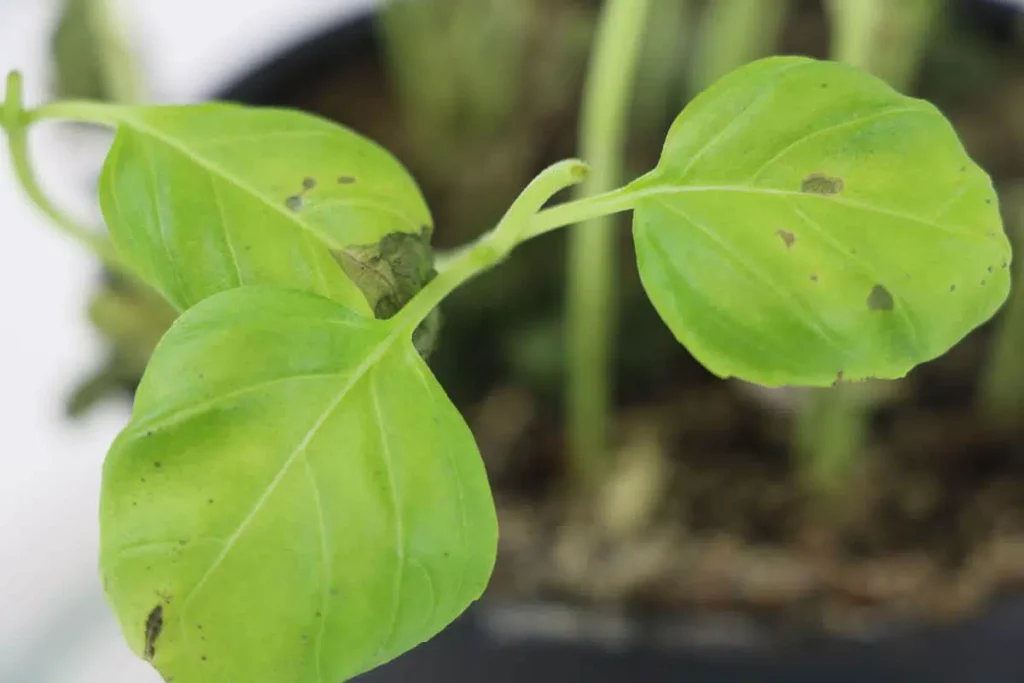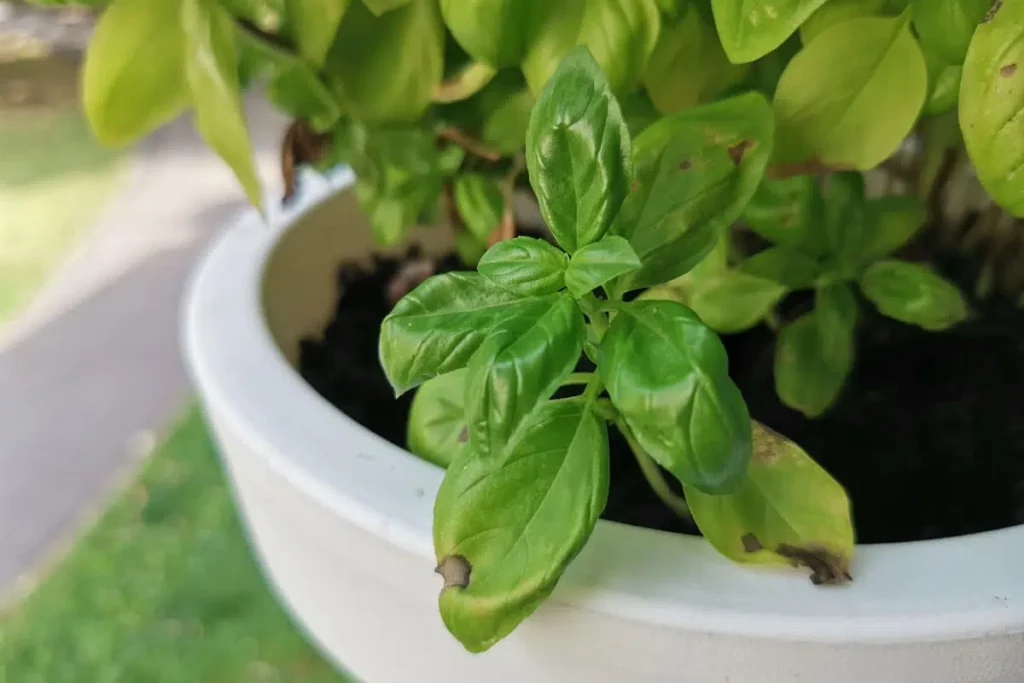Basil is one of the most popular kitchen herbs and is used not only for consumption, but also to repel insects. However, if he develops black spots, care should be thoroughly checked.
- Basil can get black spots from cold weather
- Burns are possible in the summer
- Cold damage and care mistakes are the most common causes of black spots
- Growing basil yourself can prevent problems
Contents
Cold
Cold, damp air in particular does not agree with basil and makes the aromatic plant susceptible to fungal attack, which can cause black spots. Due to its origin, the herb is comparatively sensitive. Transport in a poorly insulated truck can be enough to cause cold damage to the plant.
The difficulty here is that black spots due to insufficient temperature usually do not appear immediately, but with a time delay. Thus, the cause may lie long before the purchase. While the basil in the supermarket still appears fresh and healthy, problems quickly become apparent in the kitchen at home.
However, this can be prevented by following appropriate procedures. These include:
- Grow basil yourself
- buy in nurseries and not in supermarkets
- Avoid temperatures below 15 °C
Tip: Even in summer, nighttime temperatures can drop below 15 °C. Therefore, to be safe, the plant should be indoors or at least put indoors at night.
Heat
High temperatures, or more specifically sunlight, can also produce black spots on the leaves of basil. Instead of fungus or cold damage, however, these are burns.
The risk of this is increased when dew drops or rainwater accumulate on the leaves. These drops act as lenses and concentrate the sunlight. As a result, localized burns not only occur more quickly, but also become more severe and darker in a shorter period of time. It is difficult to tell the difference between cold damage and burns, and not only for laypersons. In any case, the points are similar and requires a review of the culture conditions.
Care
When the crop is weakened, fungi can spread more quickly and easily, producing black spots. In addition, the chances of complete recovery from damage are lower. However, by taking the appropriate measures, it becomes possible to prevent problems on the one hand, and on the other hand, to save the plant in case of an already existing damage or infestation with pathogens. The measures are:
- Recognize reason: Is the location too cold or is too much direct sunlight hitting the leaves? Is there high humidity? Even these simple questions can shed light on whether there is a problem with the crop. If the care conditions are already optimal and the basil was newly acquired, it must be assumed that there was a damaging transport or previously unfavorable storage.
- Care: Above all, proper watering should be taken into account. Because if watering is done incorrectly, problems will quickly arise. Appropriate fertilizing is also crucial. Coffee grounds, horn shavings, nettle manure or compost are suitable home remedies. However, you can also use special herb fertilizer. The additional nutrient supply should be weekly from May to September.
- Protection: abrupt changes can not tolerate the Mediterranean spice. Changing the location suddenly or removing the film too quickly can therefore also create problems. Slow changes are better. Remove packaging piece by piece and slowly move the planter to another position.
- Harvesting and trimming: Comparatively heavy harvesting combined with proper care is ideal if black spots are already present. However, removing the affected leaves will only prevent the spread of fungus. You cannot prevent burns or black spots caused by too low temperatures by doing so.

Watering
Especially in terms of watering the plant shows itself susceptible to errors in care. Therefore, you should pay attention to some points:
- Water must be at room temperature
- Watering should be done from below
- Avoid waterlogging
- use soft water with low lime content
- Water frequently but in small amounts
Tip: Often tap water is very hard. Better options for watering basil are rainwater, pond water, aquarium water or even stale or filtered tap water.
Parasites
Ocimum basilicum – as the Mediterranean culinary herb is called in botanical terminology – is rarely attacked by parasites. In fact, the plant is actively used against pests and is therefore wonderfully suitable for mixed plantings as a natural defense.
Only snails use the leaves as a food source. So, if there are black spots, there is no need to assume that it is a pest infestation.
Frequently asked questions
Why is homegrown basil less likely to have black spots?
Why is homegrown basil less likely to have black spots?
Herbs purchased in the supermarket have already been transported for a long time. This can result in a build-up of moisture, and both temperatures and light conditions fluctuate. Therefore, it is not surprising that the plants often show damage or even die after a few days. With home-grown plants, this problem does not exist.
In addition, when sowing your own seeds, you can also choose an appropriately resistant variety.
When can Ocimum basilicum be grown outdoors?
If a protected location is chosen and temperatures are above 15 °C. Direct midday sun should be avoided. East and west are therefore ideal. Since the plant quickly suffer at cooler temperatures, strong wind should also be avoided.
Save basil plant – is it possible?
Even if black spots appear on the leaves of basil, the plant can definitely still be saved. Removing the affected parts of the plant and adjusting the care is often already enough. In addition, a change of location may be useful.
What must be taken into account when controlling the plant?
If the basil leaves are still to be consumed, it goes without saying that no substances hazardous to health may be used. As a precaution, leaves with discoloration should no longer be eaten, as the cause could be fungi.


